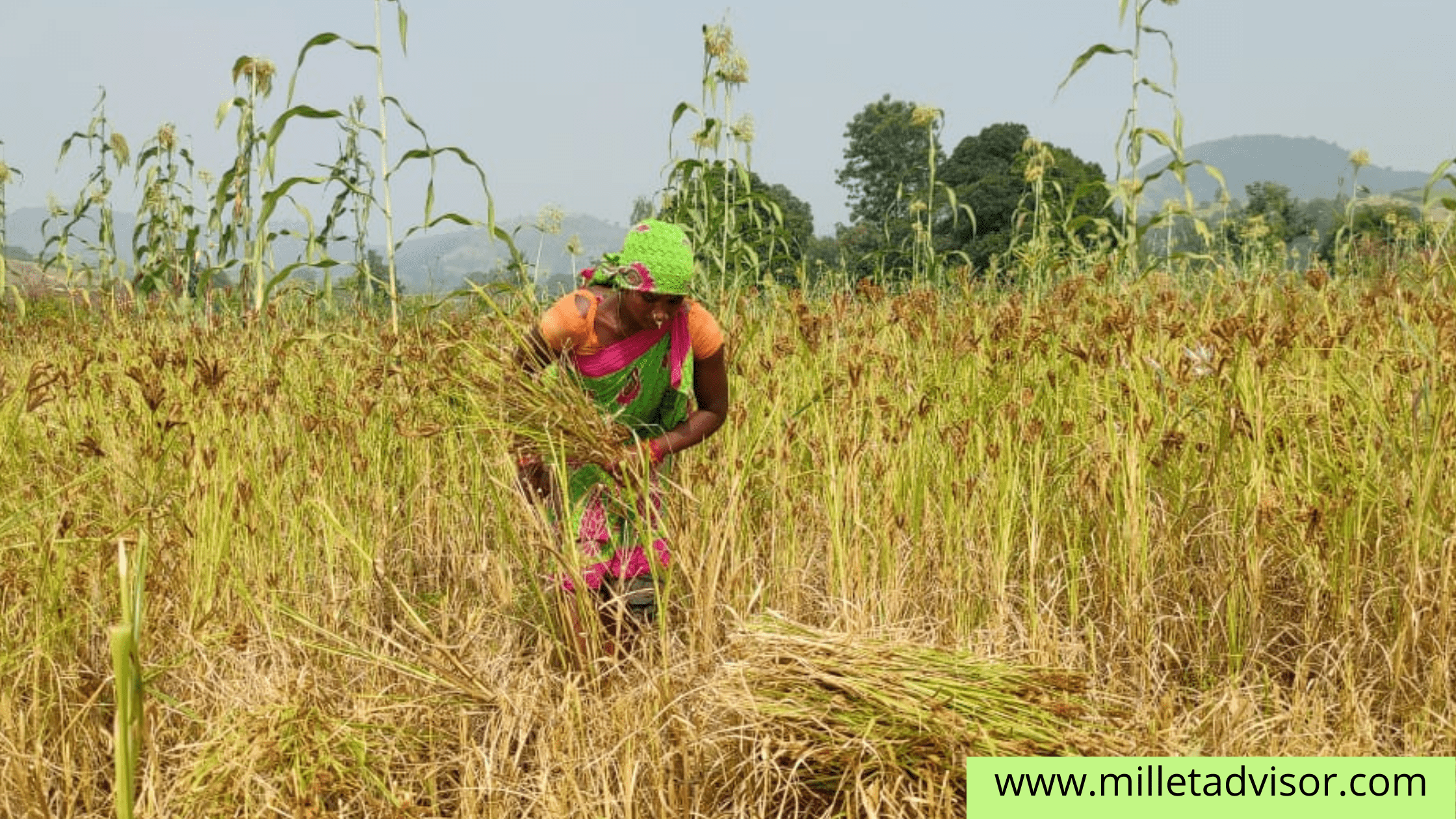Table of Contents
Importance of Millets in India:
Millets are a group of small-seeded annual grasses that are grown as grain crops primarily on marginal land in dry areas and belong to the Poaceae family. Millets are the ancient food grains first domesticated for food and grown in 131 countries. Millets are the traditional food for 59 crore people in Asia and Africa.
Millets are the only crop that will address important issues in the future like food, feed, fuel, malnutrition, health, and Climate Change. Millets are adapted to a wide range of ecological conditions demanding less water and inputs and fit well even in infertile soil.
There are nine types of Millets grown in India. The major millets are Sorghum, Pearl Millet, and Finger Millet covering 95% of the total millet growing area in India and the rest 5% are Little Millet, Foxtail Millet, Barnyard Millet, Proso Millet, Kodo Millet, and Browntop Millet.

Nutritional Importance of Millets:
Millets are the storehouse of nutrition and now they are known as Nutri-Cereals. Millets are unique in terms of nutrients and health benefits. So, millets are miraculous. Pearl Millet contains the highest iron content. It is about 4 to 8 mg per 100 gm of grain and has the ability to tackle anemia in India. It is also rich in Zinc and Folic acid and is recommended for pregnant women. Pearl Millet contains 2 times more protein than milk.
The recent systematic review and Meta-analysis of millets have given us enough evidence of the potential of millets for managing and reducing diabetes. The low glycemic index of millets is helping to manage diabetes. Finger Millet known as Ragi has the highest Calcium content of about 364 mg per 100 gm of grains. It is 3 times more Calcium than milk. This Calcium dense grain keeps the bones and teeth strong.
Millets are rich in dietary fiber and help in digestion and prevent constipation. Kodo Millet contains high dietary fiber that is 3 times more than wheat and maize and 10 times more than rice. The high fiber content in millets acts as a pre-biotics and thus helps to maintain a healthy gut microbiome. Millets are absolutely gluten-free and it is good for celiac patients. Millets are rich in antioxidants which protect our cells from free radicals.
A recent study showed that millets can reduce the risk of developing cardiovascular diseases. Millets help in weight loss. The specific content of millets like dietary fiber, Policosnols, and Tryptophan helps in weight loss.
Importance of Millets in the Indian Agriculture Sector:
Apart from health benefits, millets are resilient to climate change as they are adapted to a wide range of temperatures, and moisture regimes, and demand less input to grow. They are hardy crops that have low carbon & water footprints. It can sustain drought and even 350-400 mm of rainfall is sufficient for millets. Millets grow faster, putting less stress on the environment.
The United Nations General Assembly adopted a resolution declaring 2023 as the International Year of Millets, as proposed by India to the Food and Agriculture Organization and the primary aim of this initiative is to increase the awareness of millets’ health benefits among the people and their suitability for cultivation under tough conditions marked by climate change.
Importance of millets in the context of Climate Change:
In rice production, temperature increases are predicted to reduce rice yields. So, there is a need to consider adaptive measures to cope with changing agricultural patterns. Due to climate change, there is a decline in yield leading to food insecurity, more attacks of pests and diseases, soil degradation, change in crop schedules, and desertification. Considering, millets as an alternative crop is a better choice and we can say it is the future crop.
Economic Importance of Millets:
India is the highest producer of millets in the globe and the 5th largest exporter of millets. Its exports are increasing exponentially as the demand for millets is increasing at a fast rate. Millets are addressing the need for fuel and feeds. It has the potential to produce biofuel.
As the demand for millets is increasing, it is creating more business opportunities for entrepreneurs. Millet Market size was over USD 9 billion in 2018 and will witness more than 4.5% CAGR during the forecast timespan(2018-2025) and the value projected is more than USD 12 billion.
Importance of Millets by the Prime Minister of India:
Conclusion:
Although we are facing challenges in the quality, supply chain, and processing of millets but the efforts from all the stakeholders in India will end up all the problems. Finally, the Millets are the future of food and farming. So, Enjoy millets.#letsmillets
Author: Tapas Chandra Roy, A Certified Farm Advisor on Millets, ‘Promoting Millets from Farm to Plate’ and an Author of the book -” Millet Business Ideas-Empowering Millet Startups”. In a mission to take the forgotten grains- Millets to Millions. To remain updated on my blogs on Millets please subscribe to my newsletter and for any queries please feel free to write to [email protected]



Very informative and needful litrlerature.
I have enjoyed reading this and as an entrepreneur in the farming industry am overwhelmed to kick start millet farming.Only that over resources are limited but the land is vast not utilised.
Very useful information 👍🏻
Btw I used it in my ‘ IMPORTANCE OF MILLETS ‘ project 😅